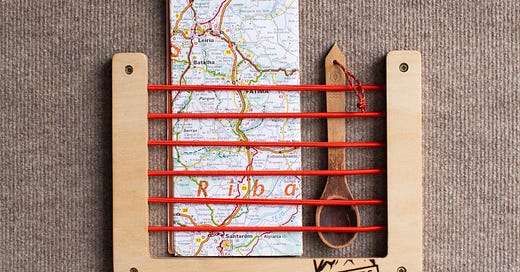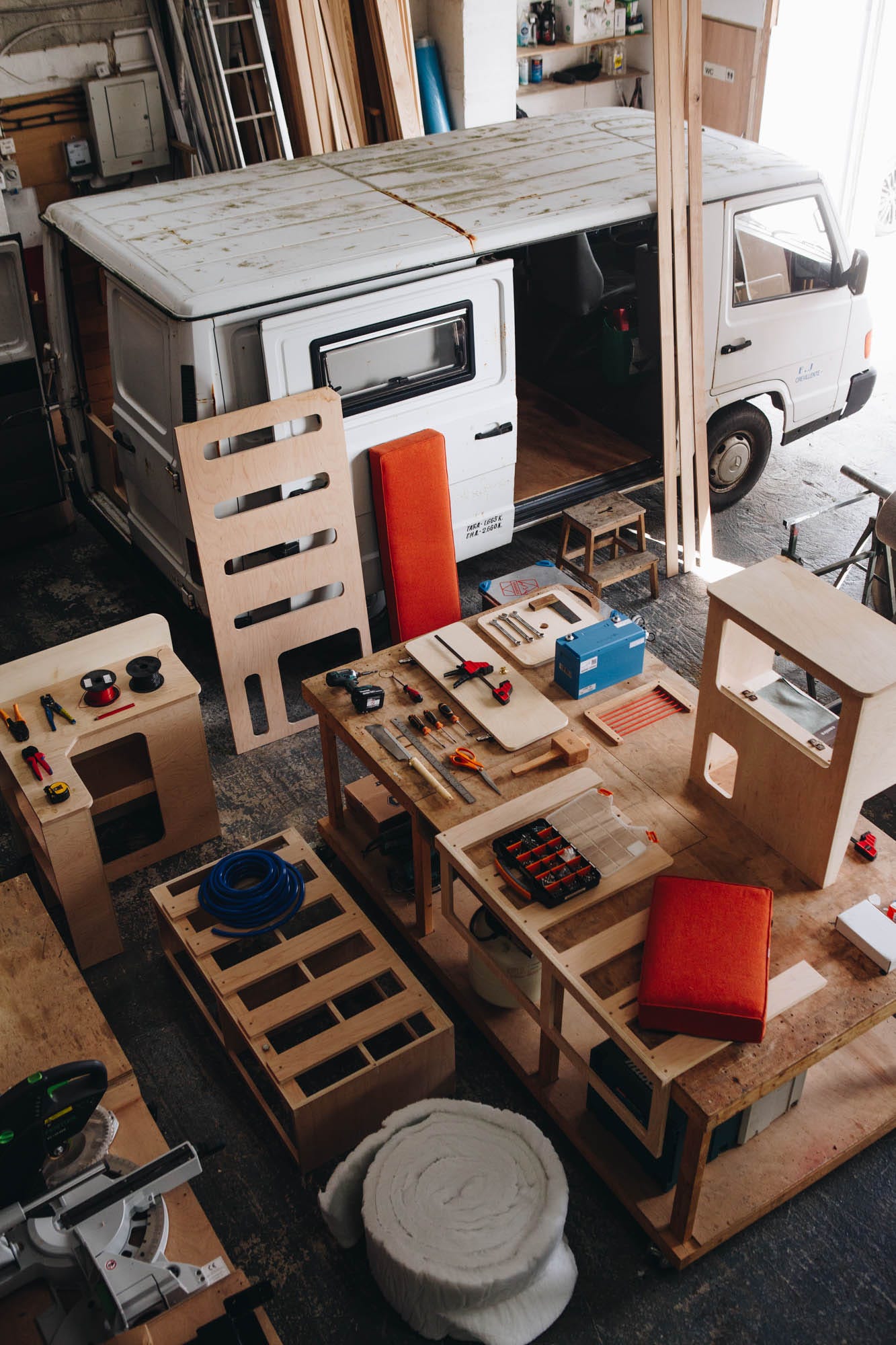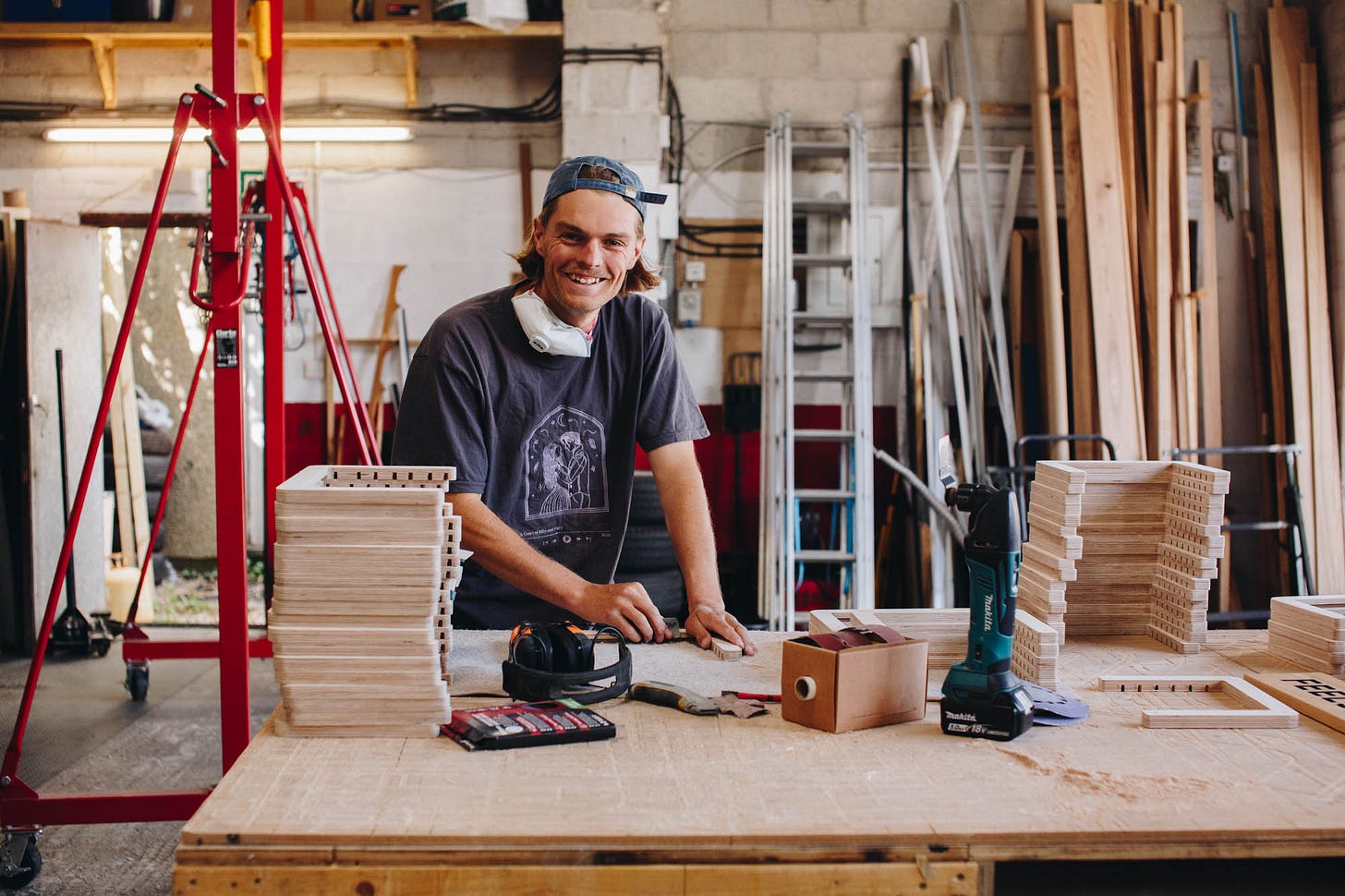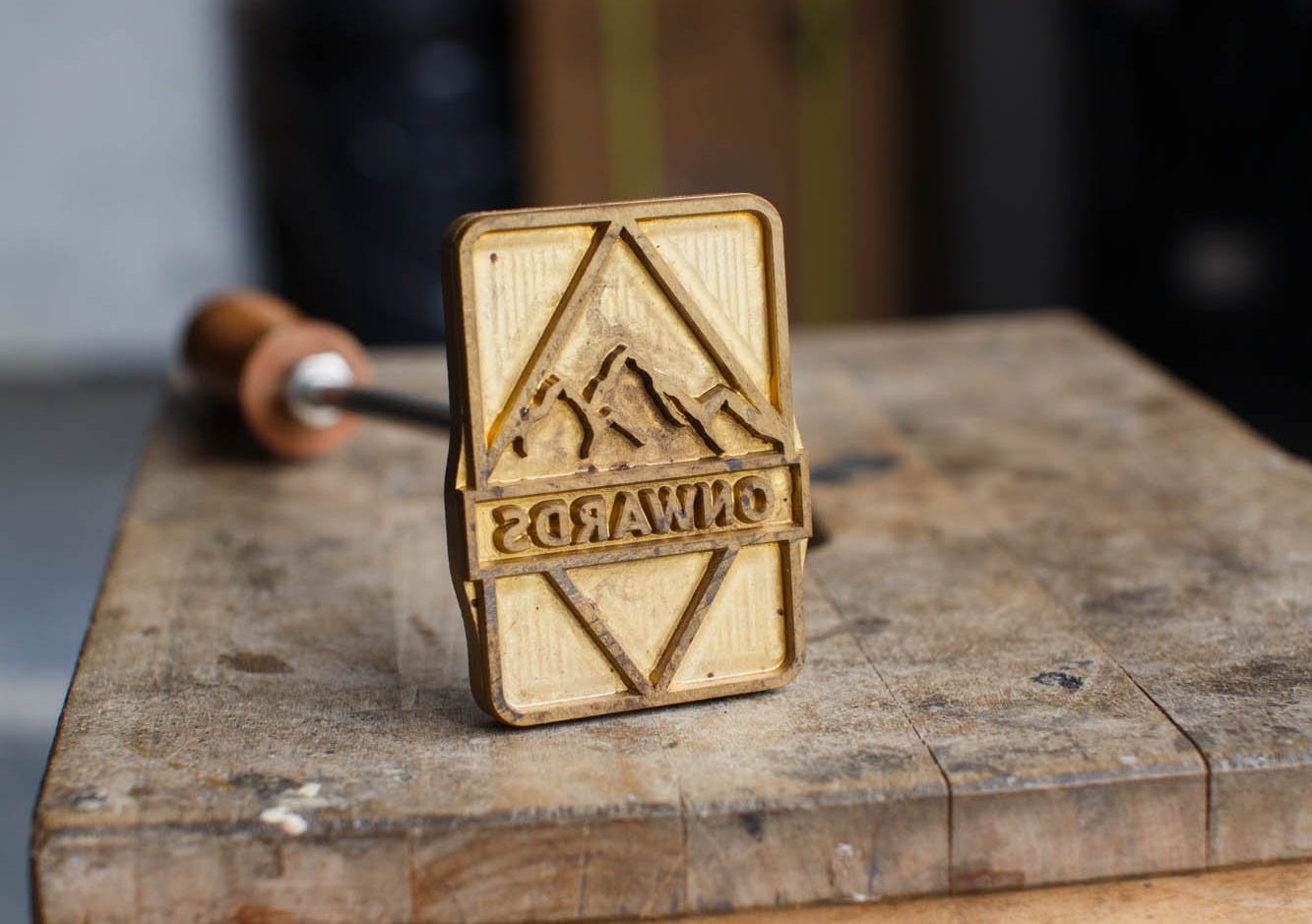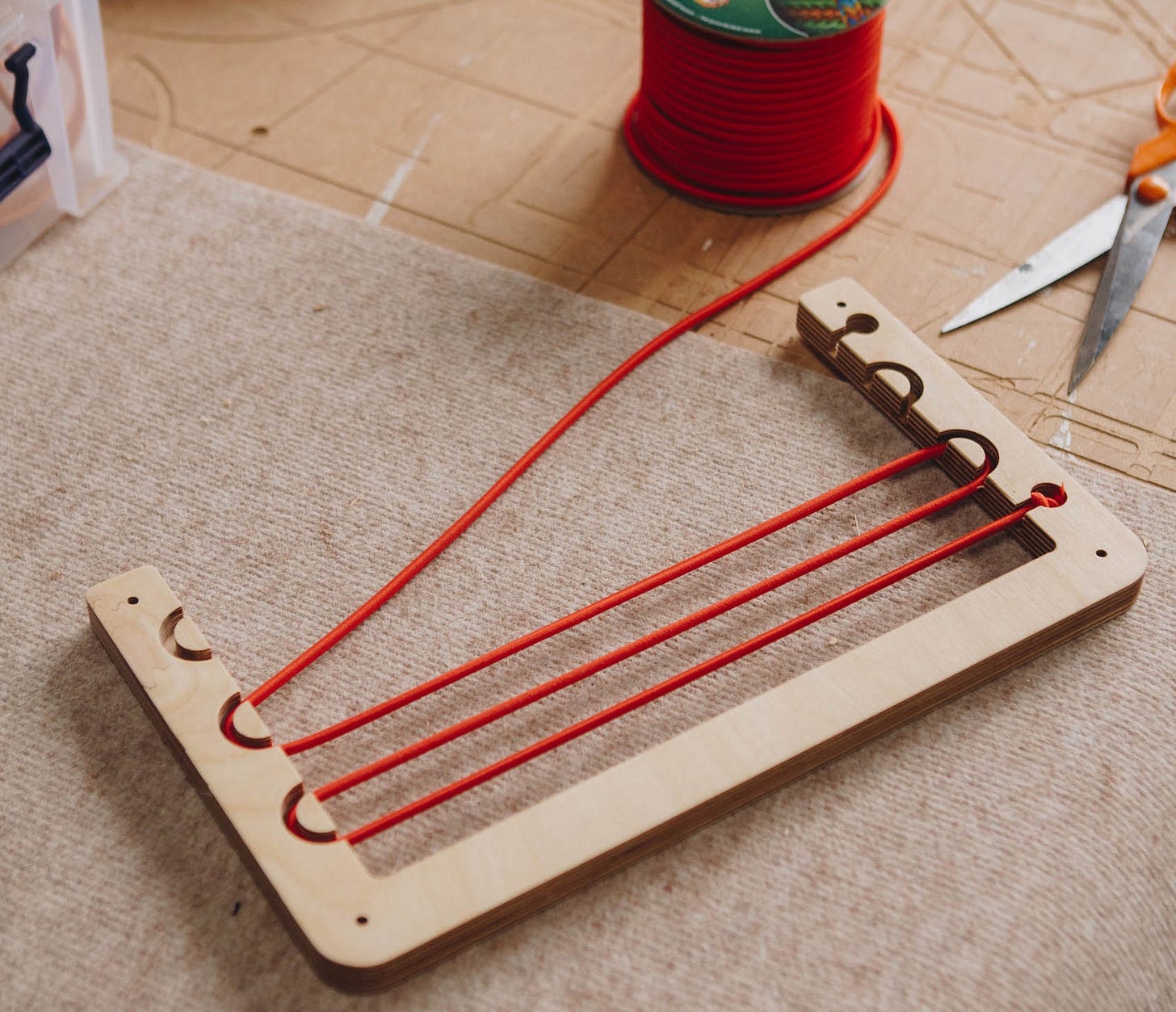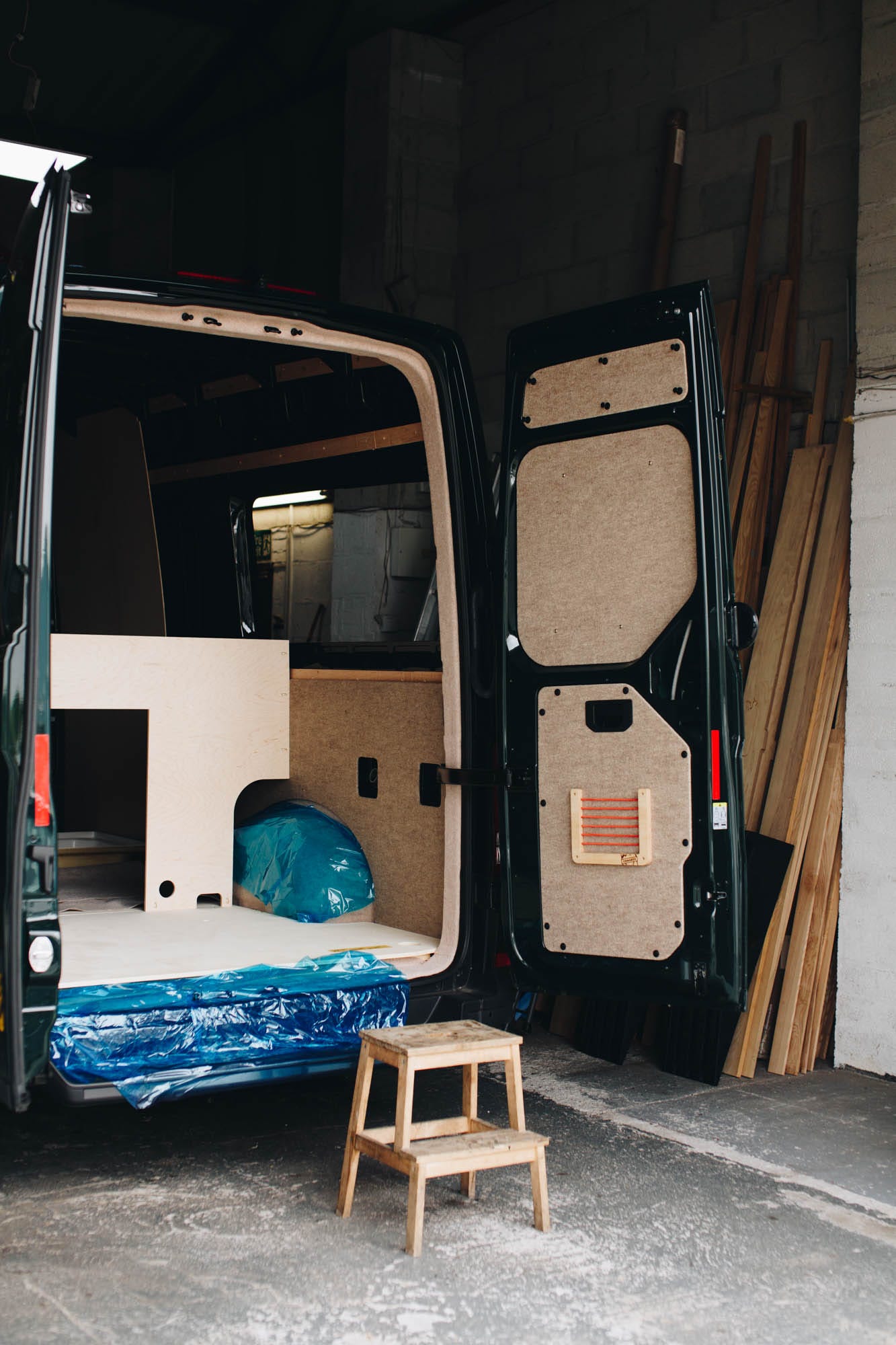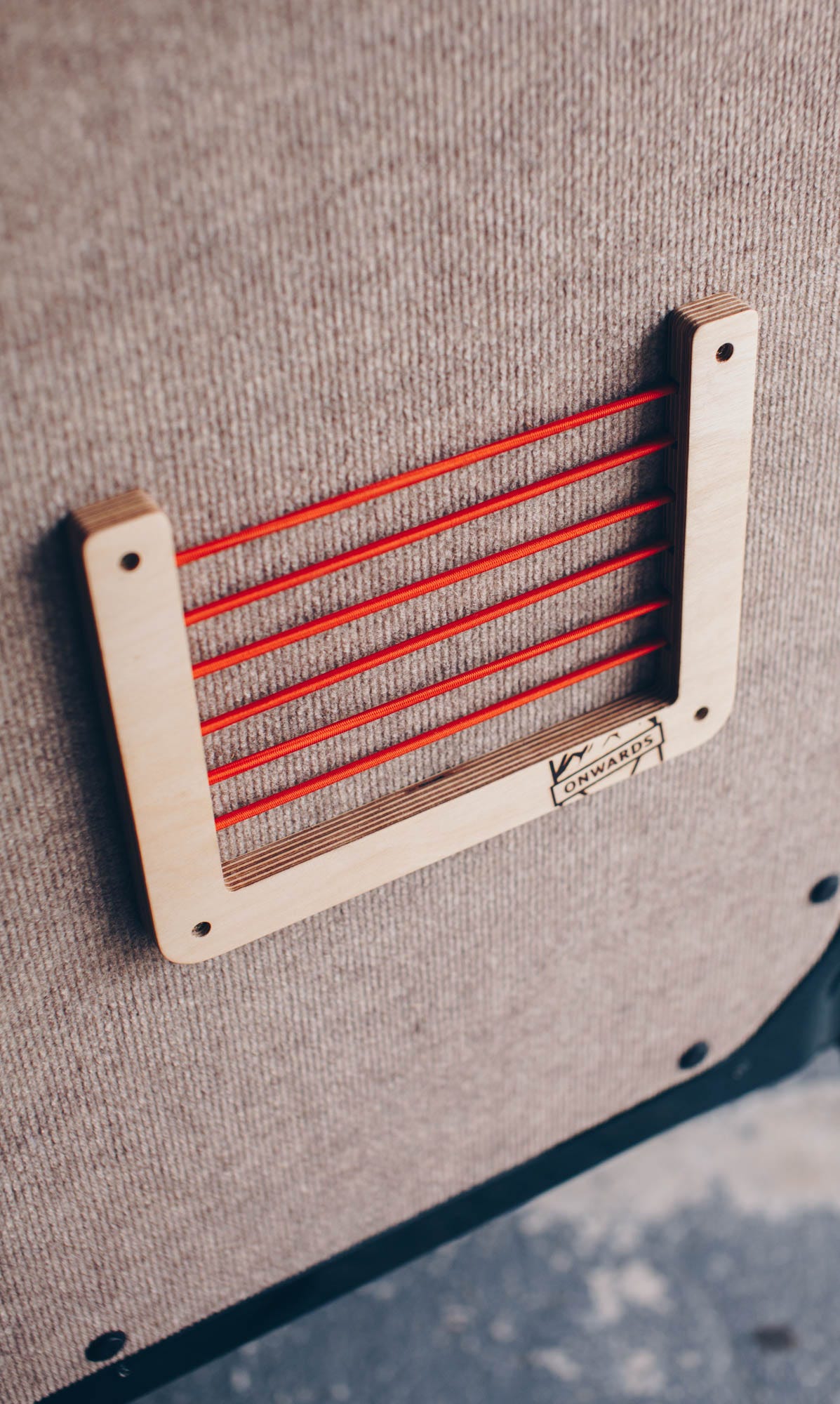A stack of odd shaped plywood pieces sat in the workshop for weeks. Leftovers from a recent project; creating seat profiles and jigs for friends who build steam bent wooden furniture. Once these were cut from the sheets of plywood and removed, I was left with offcuts. I stacked them, considering if there was value in each.
I battle my proclivity to hoard and an alien drive for efficiency. I want to keep hold of most things, if there is a chance that they may be useful in the future, but the workshop fills up quickly and I sadly must dispose of a great deal. These offcuts escaped the ruthless tidy ups and were moved around the workshop more times than I would care to admit.
I currently work alone. It is a challenge at times, but I am learning to enjoy the freedom and the focus that comes with solitary craft. I am able to reach something resembling ‘flow’ and I can make ideas happen with less friction. I also must take ownership over each success and failure - there is a clarity that accompanies this.
I love making things. Yet when it comes to selling, I am sometimes lost. It feels weird. This level of self-consciousness is frustrating. Whenever I have been able to present these things to people in person the exchange feels honest and equal. But online? It feels like black magic. I can get caught in overthinking – ‘How does quality traverse the algorithmic landscape? If you like what I make, then maybe you’ll like me? Blah blah blah’ Even sharing that an object is made from a piece of plywood that would otherwise have been discarded. Does that make it less desirable?
But you must know that mine is a humble business. I build one vehicle at a time. I fit smaller jobs, repairs and upgrades, between each project. I am attempting to master all manner of crafts and now I am supporting my small family. So, yes, the selling is necessary. Small batches of products help this process. My inhibitions around selling do not.
The unhelpful rumination aside, this stack of offcuts are perfect for a slightly smaller version of the elastic storage frames. Get your hands one one of these wonders and transform any vertical surface in your campervan into a place for objects to live! I might yell…
With the design slightly modified, I could set up the CNC machine then focus my attention on the current vehicle fit out. Listening for the pause of the machine in the background. This is when I would remove the current frame and fit another offcut in its place.
Once the full stack has been processed, each frame is sanded by hand. I had help, for a day, from Steven Thomas. It was great to work alongside someone on a similar path to my own. He graciously sanded and oiled and shared a yarn or two.
Then I am heating up my Onwards branding iron with a blow torch and burning the logomark into each frame. Behold, these throw away objects have become something! The value I considered had been revealed and I am reminded of words from a master of craft…
“Have nothing in your house that you do not know to be useful or believe to be beautiful” William Morris
I thread my favourite orange cord into two of the frames and fit them to the rear doors of the current project. Happy with how the frames sit against the cord lining, with the logo and dark green paintwork. I sought a large box of the things I took out of our previous van. A map of Portugal and a well-used wooden spoon from our friends at Miscellaneous Adventures. These objects will perfectly illustrate how useful these little frames are.
My friend James stopped by recently and asked for a storage frame for his van. I handed him the elastic and frame separately - he remarked at how satisfying it is to thread the bungee cord into it’s slots. I agree - this is one of many repeatable moments in the workshop.
Craft is a series of small acts that, together, provide unrivalled satisfaction. Much more than the sum of their parts. (I have considered sending the elastic out with the frames separate so that a customer gets to experience this).
Now I must sell this stack of storage frames. I considered just how to do this. I figured a little tale of how they came to be and were saved from the bin would be the best bet. If it works I’ll continue to turn offcuts that catch my eye into useful objects and discover the story in the process.
Thank you for reading this third post. I would love to hear your feedback.
Get your printed copy of The Rolling Home Journal here
If you would like to support the publication, please consider subscribing, visiting my websites - Onwards , The Rolling Home & Ever You can also support me by purchasing a publication or product via our webstore or Etsy
Thank you,
Calum

